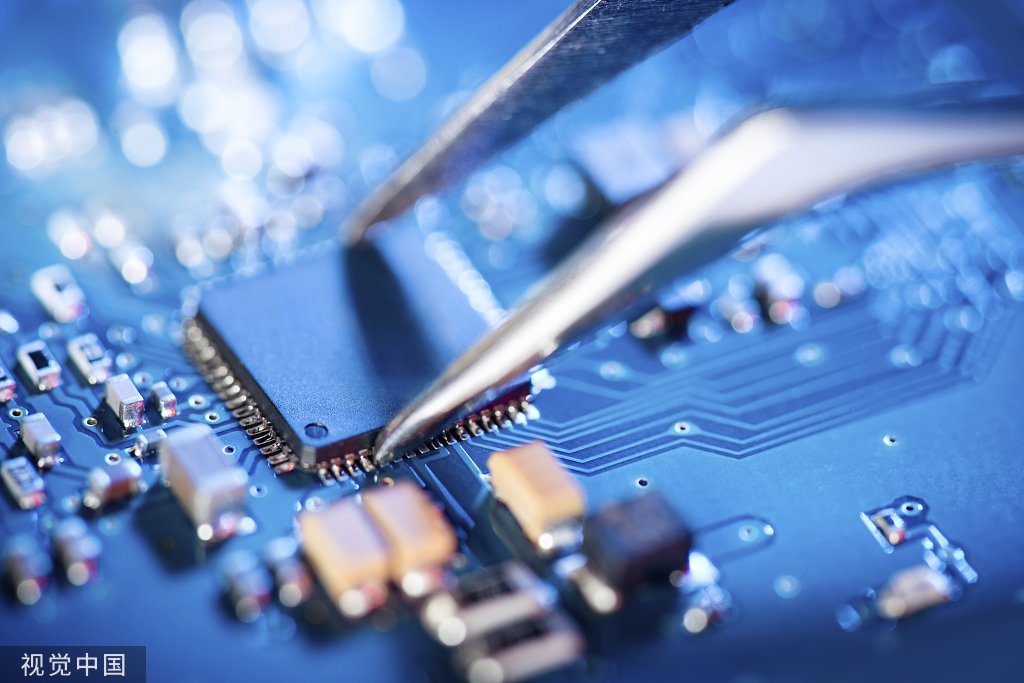- Introduction to Electronic Board Manufacturing
- Evaluating the Electronic Board Manufacturing Landscape
- Keys to Efficiency in Electronic Board Production
- The Role of Automation in Board Assembly
- Implementing Stringent Quality Control Measures
- Material Sourcing and its Impact on Board Quality
- The Importance of Precision in Component Placement
- Testing Procedures for Ensuring Board Reliability
- Maintaining Traceability Throughout the Manufacturing Process
- Addressing Challenges in SMT and THT Processes
- Continual Improvement and Lean Manufacturing in Board Production
- Conclusion: Striking the Balance between Efficiency and Quality
Introduction to Electronic Board Manufacturing
Electronic board manufacturing is a high-precision process that involves the complex assembly of electronic components onto printed circuit boards (PCBs). Each step, from design to final testing, is critical in ensuring that electronic devices perform reliably. Manufacturers employ various strategies and quality control measures, such as automated assembly lines and meticulous inspection techniques, to deliver products that meet stringent standards. This process is the backbone of modern electronics, shaping everything from smartphones to space stations. For comprehensive support in electronic board projects, consider collaborating with top manufacturers like Arisentec, which offers extensive PCB design services and PCB layout services.
Evaluating the Electronic Board Manufacturing Landscape
To navigate this industry, one must grasp key facets:
– Technological advancements: Keep up with the latest in automated assembly and testing systems for efficiency.
– Quality assurance: Understand the importance of impeccable quality control at every production stage.
– Supply chain: Evaluate suppliers’ reliability, as component sourcing is critical.
– Cost management: Balance between cost-efficient practices and quality output.
– Environmental factors: Mind eco-friendly production trends.
– Regulatory compliance: Stay within guidelines for global market access.
This assessment ensures manufacturers remain competitive and meet the demands of a fast-evolving sector. Arisentec PCB, manufacturer for turnkey PCB assembly and printed circuit board assembly services, can provide valuable insights into these aspects.
Keys to Efficiency in Electronic Board Production
Efficiency in electronic board production hinges on several critical factors:
– Streamlined Processes: Implementing lean manufacturing techniques can significantly reduce waste and increase productivity.
– Advanced Equipment: Utilizing state-of-the-art machinery for tasks like soldering and placement ensures precision and speed.
– Skilled Workforce: A well-trained team can adeptly handle complex production tasks, leading to fewer errors and quicker turnaround times.
– Quality Materials: Choosing high-quality components and substrates can prevent delays caused by faulty parts.
– Proactive Maintenance: Regular upkeep of equipment minimizes downtime and extends the life of machines.
– Automation: Integrating automation in the manufacturing process can enhance consistency and reduce labor-intensive tasks.
The Role of Automation in Board Assembly
In electronic board manufacturing, automation streamlines the process, reducing human error and boosting efficiency. Picture robots and machines swiftly placing components onto circuit boards—precision and speed at their finest. These smart systems do heavy lifting from soldering to testing, ensuring each board meets strict quality standards. With automation, we crank out more boards per hour, each one uniform and reliable, letting manufacturers keep pace with high consumer demands. Automation isn’t just a trend; it’s the backbone of modern electronic board production. Arisentec PCB, a leading PCB manufacturer in China, excels in utilizing cutting-edge automation in their processes.
Implementing Stringent Quality Control Measures
Achieving top-notch quality in electronic board manufacturing hinges on rigorous quality control. Manufacturers set high standards by:
– Introducing multiple inspection stages, including post-assembly checks.
– Utilizing advanced testing equipment like Automated Optical Inspection (AOI) to catch defects.
– Enforcing IPC standards throughout production, ensuring consistent procedure adherence.
– Training staff meticulously, so quality checks are executed proficiently.
– Committing to a Zero Defects policy, aiming for flawless output with ongoing process improvements.
Each measure is a strategic pillar, supporting the overarching goal of delivering reliable, high-quality electronic boards. Arisentec’s PCB assembly processes emphasize these stringent quality controls.
Material Sourcing and its Impact on Board Quality
Material sourcing is crucial in electronic board manufacturing. The quality of the materials—copper, solder, laminates—directly impacts board performance. Boards crafted from superior grade materials last longer and perform better. On the flip side, cheaper, low-quality materials lead to failures, recalls, and damage a manufacturer’s reputation. Additionally, ethical sourcing practices ensure that the materials are conflict-free and environmentally sustainable, which is increasingly important to consumers. Thus, manufacturers must carefully select vendors and maintain stringent quality control to ensure the boards meet both functionality and sustainability standards. Arisentec ’s commitment to quality extends to their material sourcing practices, ensuring the best outcomes for their clients.
The Importance of Precision in Component Placement
Precision in component placement is pivotal in the electronic board manufacturing process. Exact positioning ensures electrical connections are reliable and performs as designed. Slight misalignments can cause signal interference, leading to performance issues or complete system failures. Moreover, precise placement:
– Reduces the need for reworks and manual adjustments
– Enhances the throughput of automated assembly lines
– Ensures the integrity of critical circuit paths
– Supports high-density layouts, vital for modern compact devices
Maintaining tight tolerances during placement safeguards the quality and functionality of electronic boards, ultimately serving consumer satisfaction and product reliability.
Testing Procedures for Ensuring Board Reliability
Ensuring the reliability of electronic boards involves rigorous testing procedures during the manufacturing process. Manufacturers implement various tests:
– Visual Inspections: After assembly, technicians visually examine boards for obvious defects.
– Automated Optical Inspection (AOI): Machines scan for solder quality, component placement, and other surface-level issues.
– In-Circuit Testing (ICT): Specific equipment tests the electrical performance of components and verifies circuitry.
– Functional Testing: Mimics operating conditions to ensure each board works as intended in real-world scenarios.
– Environmental Stress Testing: Boards undergo extremes of temperature, humidity, and vibration to test their limits.
These steps are critical for delivering reliable products to consumers. Arisentec PCB’s comprehensive testing protocols ensure the highest standards of board reliability.
Maintaining Traceability Throughout the Manufacturing Process
In electronic board manufacturing, traceability is crucial for quality control. It involves tracking each component from its origin through every production step. Manufacturers employ barcoding and RFID technology to ensure each part’s history is easily accessible. This data-rich approach:
– Ensures Accountability: Identifying who worked on what and when.
– Facilitates Issue Tracing: Quick pinpointing of problems to their source.
– Simplifies Compliance: Meets industry standards with clear, reliable records.
– Enhances Customer Confidence: Shows a commitment to transparency and quality.
Effective traceability fosters a culture of continuous improvement, essential for maintaining a competitive edge in the electronic manufacturing industry. Arisentec PCB’s traceability practices ensure transparency and quality control throughout the production process.
Addressing Challenges in SMT and THT Processes
The electronic board manufacturing industry continuously works to improve Surface Mount Technology (SMT) and Through-Hole Technology (THT) processes. In SMT, ensuring precision placement of components can be challenging. Manufacturers tackle this by employing advanced machinery with high-accuracy placement capabilities. Regular maintenance and calibration are essential to prevent misalignment and defects.
For THT, one major challenge is the manual labor-intensive process, which can lead to inconsistencies. Solutions include using selective soldering machines for improved consistency and integrating automated quality checks to catch errors early on. Robotic assistance is also becoming more common, aiding in precise component placement and soldering.
Both processes benefit from a focus on staff training and continuous improvement programs to identify potential issues before they affect product quality. By addressing these challenges, manufacturers aim to enhance reliability and efficiency in board production. Arisentec ’s printed circuit board prototype services are designed to address these challenges effectively.
Continual Improvement and Lean Manufacturing in Board Production
Implementing a strategy of continual improvement and lean manufacturing, electronic board producers can significantly enhance efficiency and output quality. Key elements include:
– Streamlining production processes to eliminate waste
– Employing statistical process control for consistent quality
– Adopting Kaizen, which involves all employees in improvement
– Implementing 5S methodology for workspace organization
These methods lead to faster turnaround times, reduced costs, and improved board reliability, keeping manufacturers competitive in a rapidly evolving industry.
Conclusion: Striking the Balance between Efficiency and Quality
In electronic board manufacturing, optimal results hinge on finding the sweet spot where speed does not compromise excellence. It’s all about integrating innovative tech with meticulous oversight to ensure products tick both boxes. Companies must not only practice stringent quality controls but also adapt briskly to avoid falling behind. The ultimate goal? Delivering top-tier circuit boards at a pace the modern market demands. Balancing these elements is key to success in the fast-paced world of electronics. By partnering with leading manufacturers like Arisentec which excels in fast PCB prototyping services and PCB design services, you can achieve this balance effectively.
Choosing the Right Wires for Breadboard Wiring: A Comprehensive Guide
Breadboards are a staple in electronic circuit building, offering flexibility and ease of use for both beginners and professionals. However, one of the most critical aspects of working with breadboards is selecting the right wires. The wires you choose can impact not only the functionality of your circuit but also its longevity and ease of…
How to Improve Heat Dissipation in PCB Design
Introduction As modern electronic devices become more complex and power-dense, heat dissipation has emerged as a critical factor that directly impacts device performance and reliability. Excessive junction temperatures in electronic systems can shorten the lifespan of components and lead to system failure. Thus, optimizing the PCB (Printed Circuit Board) design to improve heat dissipation is…
Manufacturing Process of Multilayer PCBs
Multilayer PCB manufacturing methods include the plated-through hole (PTH) and high-density interconnect (HDI) methods, both achieved by combining different processes to realize the circuit board structure. Currently, the most widely used method is the PTH method, which has been developed and refined over more than half a century. The PTH method is mature in terms…


